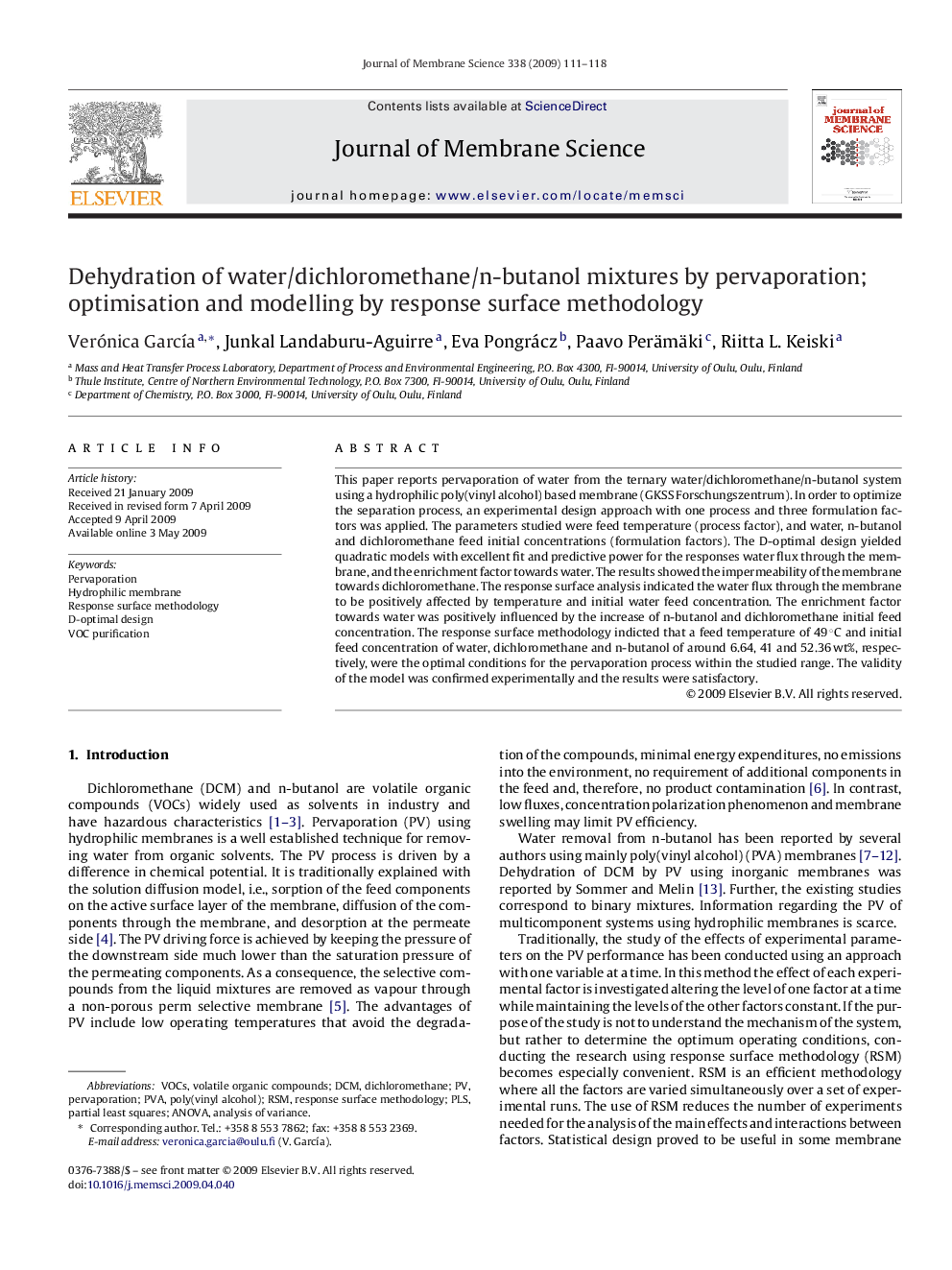| Article ID | Journal | Published Year | Pages | File Type |
|---|---|---|---|---|
| 637012 | Journal of Membrane Science | 2009 | 8 Pages |
This paper reports pervaporation of water from the ternary water/dichloromethane/n-butanol system using a hydrophilic poly(vinyl alcohol) based membrane (GKSS Forschungszentrum). In order to optimize the separation process, an experimental design approach with one process and three formulation factors was applied. The parameters studied were feed temperature (process factor), and water, n-butanol and dichloromethane feed initial concentrations (formulation factors). The D-optimal design yielded quadratic models with excellent fit and predictive power for the responses water flux through the membrane, and the enrichment factor towards water. The results showed the impermeability of the membrane towards dichloromethane. The response surface analysis indicated the water flux through the membrane to be positively affected by temperature and initial water feed concentration. The enrichment factor towards water was positively influenced by the increase of n-butanol and dichloromethane initial feed concentration. The response surface methodology indicted that a feed temperature of 49 °C and initial feed concentration of water, dichloromethane and n-butanol of around 6.64, 41 and 52.36 wt%, respectively, were the optimal conditions for the pervaporation process within the studied range. The validity of the model was confirmed experimentally and the results were satisfactory.
